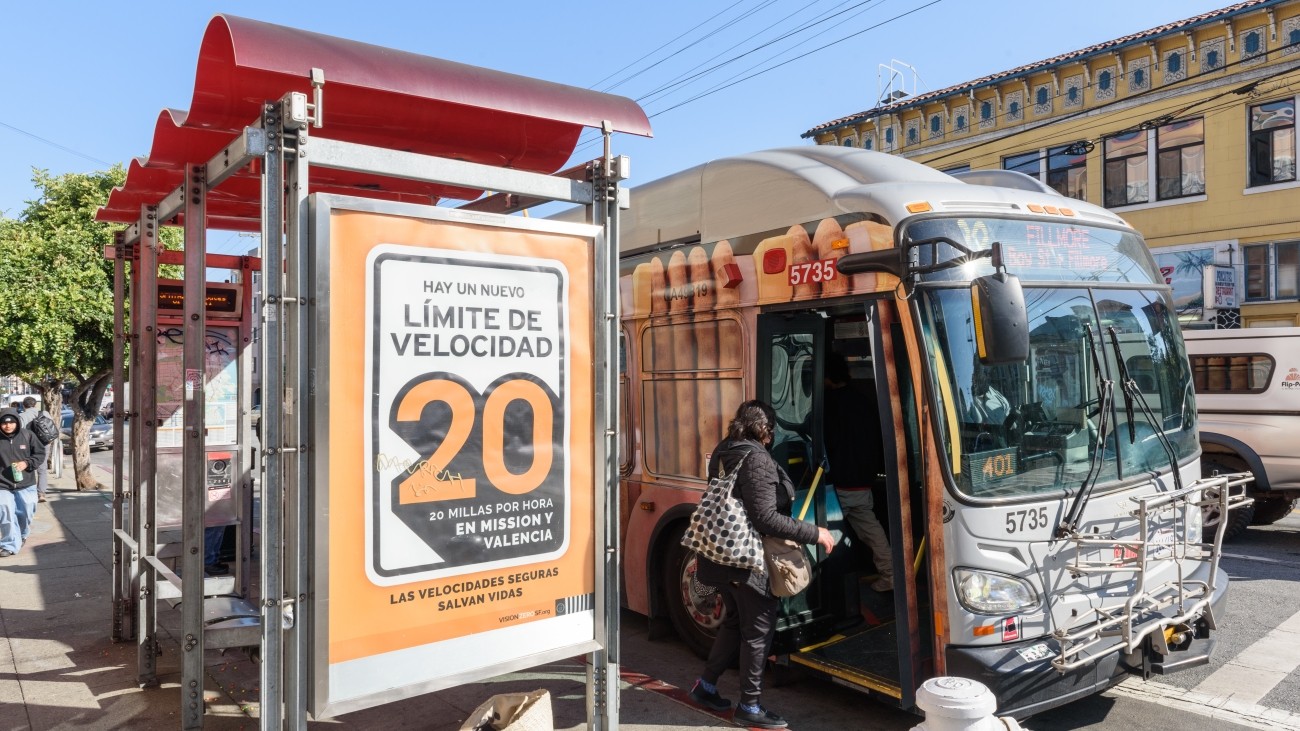
Photo by SFMTA Photography Department
In 2014, San Francisco adopted Vision Zero as an ambitious policy goal. Passage of the local legislation made San Francisco the second city in the nation to commit to creating safer, more livable streets with the goal of eliminating all traffic fatalities and severe injuries. Vision Zero uses a data-driven approach, to identify trends, collisions factors, and strategies to improve safety. Vision Zero work strategically focuses on the High Injury Network - the 12% of streets where more than 68% of severe and fatal traffic crashes occur.
This month, Mayor Breed, local officials, and community members gathered at City Hall to mark the 10 year anniversary of Vision Zero’s adoption to re-commit the city to work toward achieving zero deaths and severe injuries. Transportation Authority Chair Rafael Mandelman thanked agencies, advocates, and community members for working together to re-design our streets and increase visibility, reduce speed limits and conflicts, and to advance education and enforcement including the upcoming installation of speed safety cameras citywide. He also re-committed the Transportation Authority’s partnership providing funding for Vision Zero projects from voter-approved Prop L sales tax, Prop AA vehicle registration fees, Prop D TNC tax programs.
Earlier in the week, the SFMTA also presented on its Vision Zero efforts to the Transportation Authority Board (see hearing on March 26). The SFMTA provided a 2023 recap and 2024 look ahead for the Vision Zero program, describing two efforts aimed at improving street facilities and enforcing speeding:
- Speed Safety Cameras: Speed safety cameras are a proven tool to address excessive speeding and reduce severe and fatal injury traffic collisions. San Francisco will be installing these at 33 strategic locations. This is a five-year pilot program from state Assembly Bill 645 (Friedman), signed by Governor Newsom in October 2023.
- Quick-Build Projects: 17 corridor quick-build projects are underway and SFMTA is working on completing improvements across all intersections in the entire High Injury Network. Over 100 intersections have improvements in progress and 190 intersections have received improvements already. We will continue working with the SFMTA on pedestrian and bicyclist safety improvement projects for the 50 remaining miles of the High Injury Network.
Learn more about Vision Zero SF and get involved here.
Resources
- Watch the SFMTA Presentation at the March 26 Transportation Authority Board meeting
- Press Release: Mayor Breed and City Officials Mark 10 Years of Vision Zero and Next Steps in Street Safety on March 28
- Vision Zero SF website
- Vision Zero SF Fatality Reporting Map
- Vision Zero SF Action Strategy
- Vision Zero SF Quick-Build Program